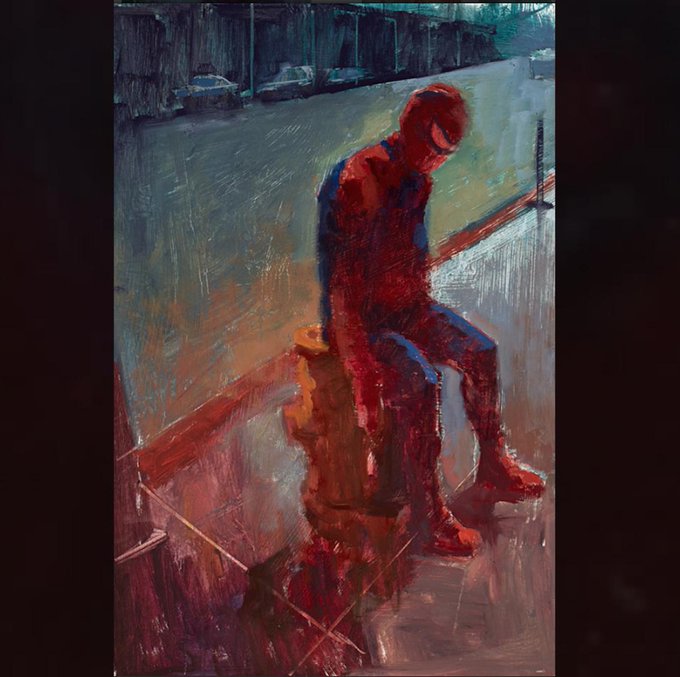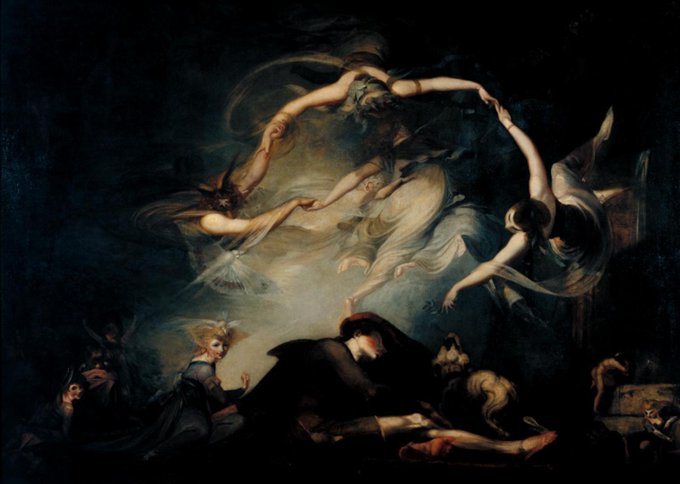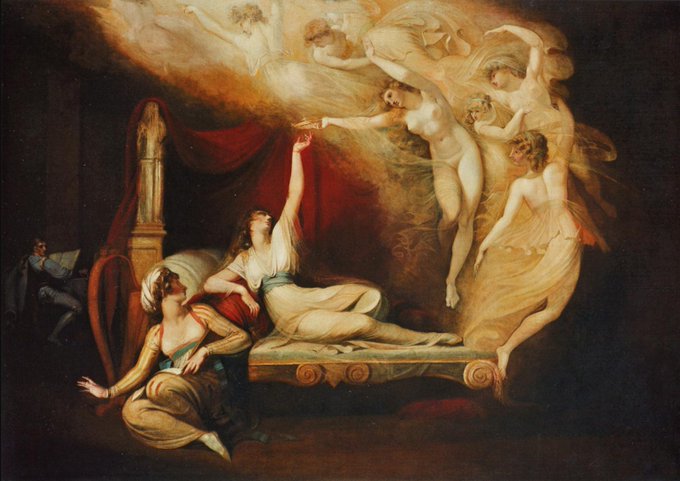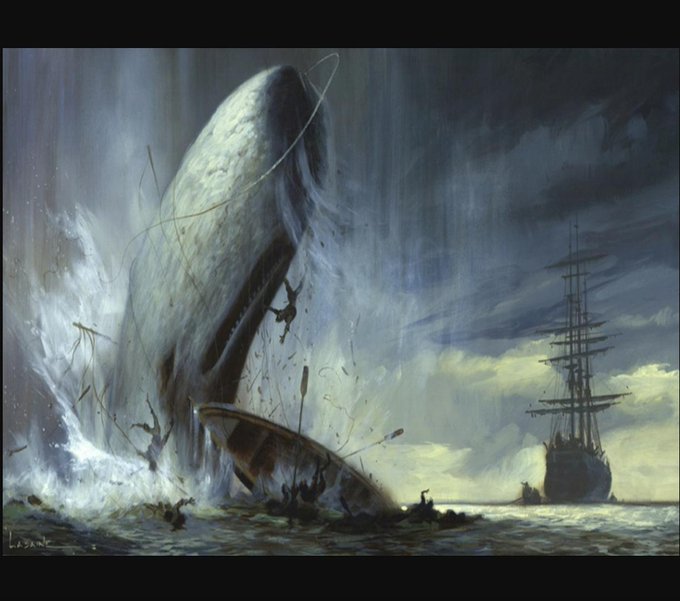The other-wordly art of František Kupka. Kupka (1871–1957) was a Czech painter & graphic artist. Better known for his later abstracts, his earlier symbolist paintings & mezotints are quite astounding. He was drawn into Spiritualism & some sources say he worked as a psychic medium
The magical melancholy in the fairytale illustrations of John Bauer (1882-1918). Bauer was a successful, young, pioneering Swedish folklore illustrator. When Bauer was 36, he drowned, together with Ester and their son Bengt, in a shipwreck on Lake Vättern.
Virginia Woolf's mother - Julia Jackson (1846 –1895) was the model for Edward Burne-Jones painting "The Annunciation" (1879). Her likeness became the iconic Pre-Raphaelite face in many other paintings by the movement.
If an Artificial Intelligence could paint clouds, they might look something like this. The sublime art of Tracie Cheng.
@nikimcglynn and takes us back to "nude descending a staircase" by Duchamp.
Forgotten Superheroes. William Wray's Superheroes are unwanted, overlooked, street people. Wray (1956- ) is an American cartoonist, animator & painter widely known for his contributions to The Ren & Stimpy Show. These days he paints the "fading urban remains" of the old USA.
Dreams by Henry Fuseli (1741-1825). Obsessed with dreams & the supernatural, his style influenced many younger British artists, including William Blake. In the 20th century, Fuseli's nightmare paintings were interpreted as anticipating Freudian ideas about the subconscious.
The haunting illustrations of Rockwell Kent for Moby Dick (1930). When Kent died of a heart attack in 1971, The NYT described him as "... a thoughtful, troublesome, profoundly independent, odd & kind man who made an imperishable contribution to the art of bookmaking in the U.S"
Sunk after Moby Dick. We think of Herman Melville as The Great American Novelist, but after Moby Dick (1851) he endured 40 years of rejection, debt, illness, the loss on an entire novel & the probable suicide of a son. His work was forgotten till 28 years after his death.



































